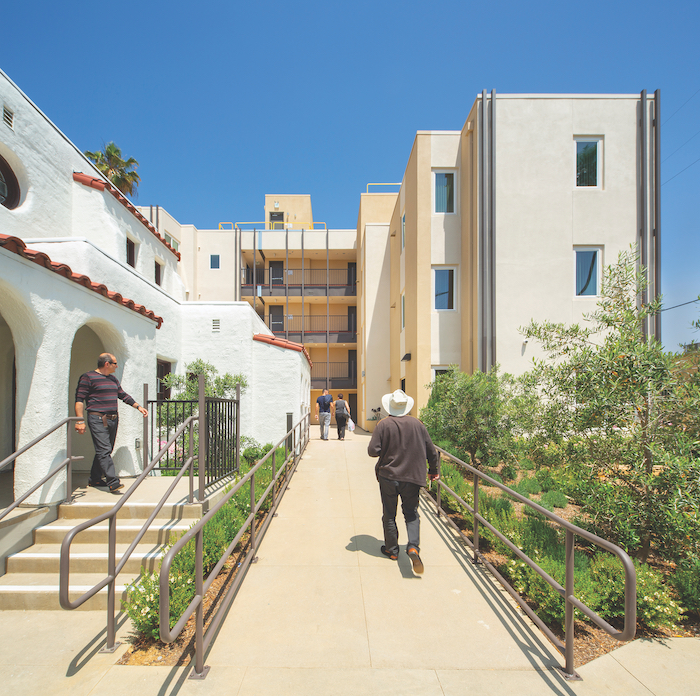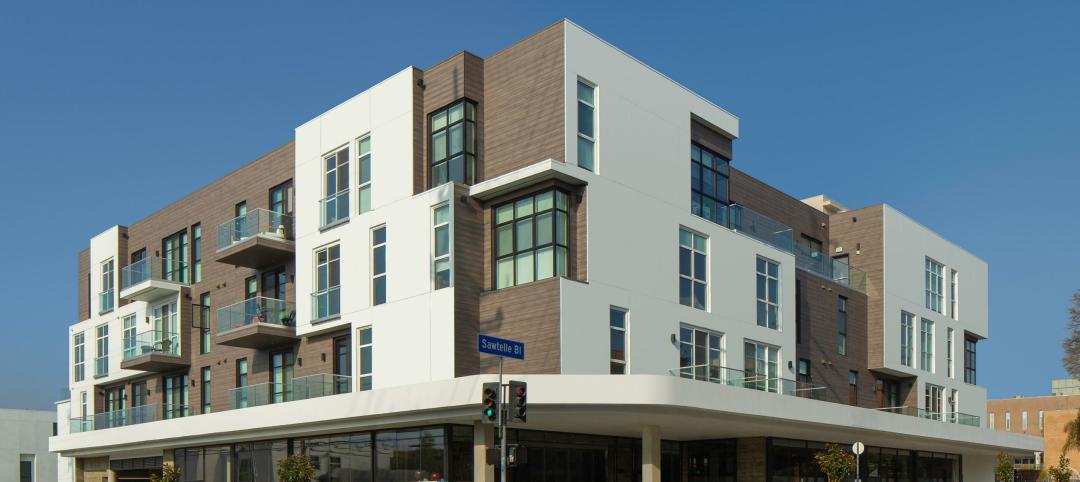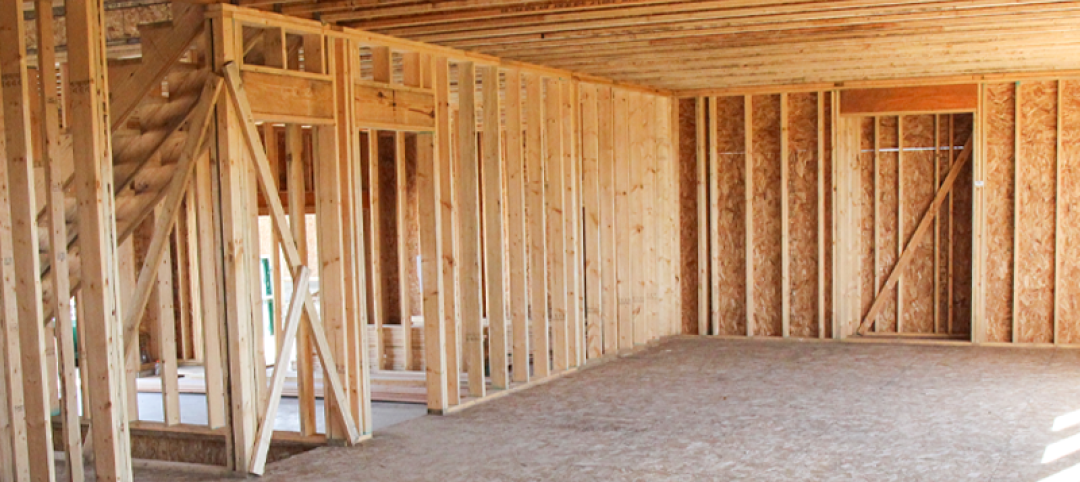Affirmative Investments, CIM Group, Hollywood Community Housing Corp., and Pearl Properties are among the developers to complete multifamily projects in late 2019. Here are eight noteworthy projects collected by the editors of Multifamily Design+Construction magazine:
1. PREFABRICATION SAVES VALUABLE TIME ON DENVER HIGH-RISE
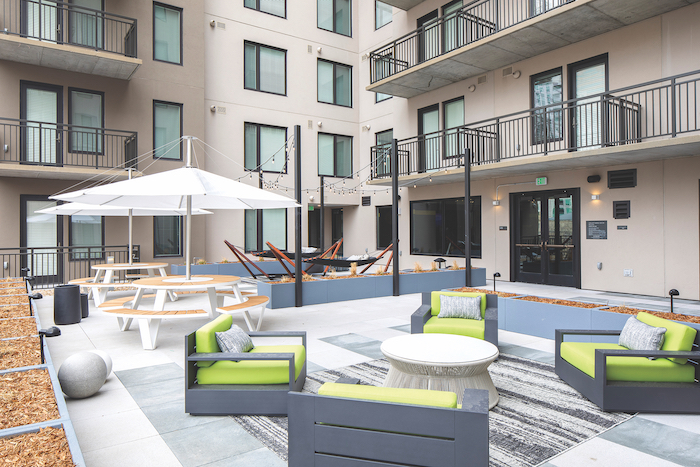
Using five different prefabrication components, a team led by The Weitz Company (GC) completed SOVA, a 12-story, 211-unit rental high-rise in Denver’s Uptown neighborhood, in less than 24 months. A 3D BIM model guided MDA Construction’s installation of the 10X20-foot metal framing walls and prefab MEP systems from South Valley Prefab and interior metal framing from Infinity. The LEED Silver complex has six EV charging stations, a DIY bike and ski repair shop, storage for 95 bicycles, a paw spa, and a 12th-floor indoor sky lounge and sky deck. Also on the team for developer McWhinney: Craine Architects (designer); KL&A (SE); and ME Group (mechanical engineer). PHOTO: JAMES RAY SPAHN
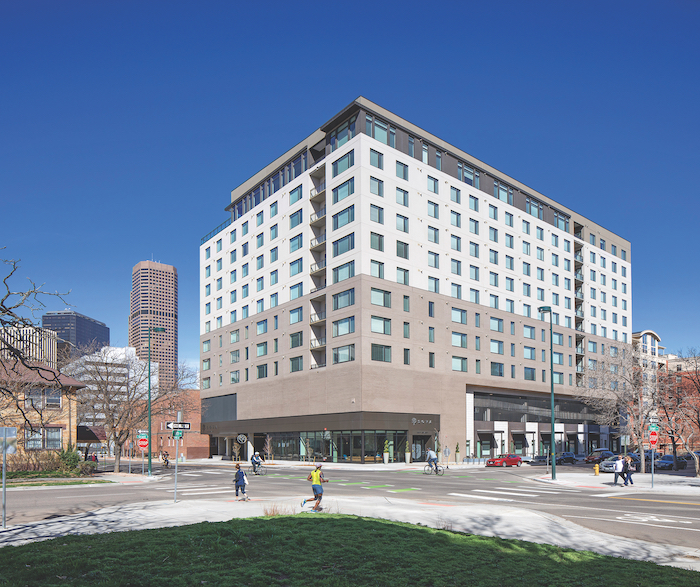
2. AWARD-WINNING AFFORDABLE RENTALS IN ST. PAUL
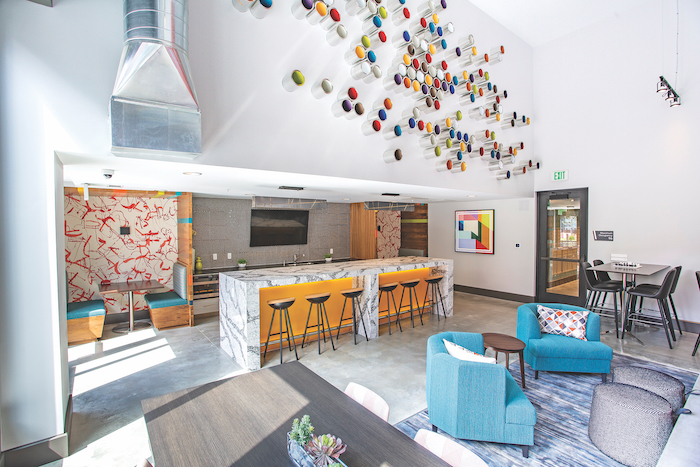
An intriguing paint can installation marks the community room at Union Flats, 217 affordable rentals in St. Paul, Minn., designed by BKV Architects. GC Weis Builders had to remediate a contaminated four-acre site to build the U-shaped structure near the Twin Cities’ light-rail line. Owner/manager Dominium won a Vanguard Award from the National Affordable Housing Management Association for the $67 million project. PHOTO: ALEX CARROL
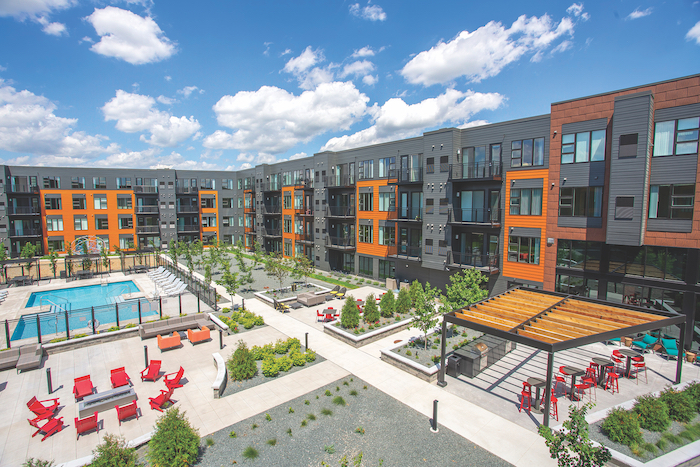
3. LUXURY COMMUNITY OFFERS HARBORSIDE LIVING IN OXNARD
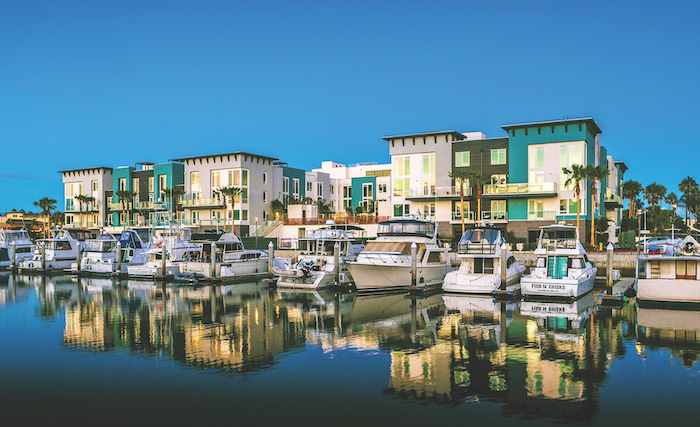
SVA Architects designed The Reserve at Seabridge, 75 live-work units on a 5.6-acre marina-facing site in the Channel Islands Harbor at Oxnard, Calif., 60 miles west of Los Angeles. The luxury apartment complex, part of the master-planned Seabridge community, has a 6,300-sf recreation center and fitness facility, swimming pool, spa, and sundeck. The owner/builder was VK Builders Corp. LJP Construction Services was waterproofing consultant. PHOTO: COURTESY SVA ARCHITECTS
4. PHILADELPHIA DEVELOPER ADDS LARGER APARTMENTS
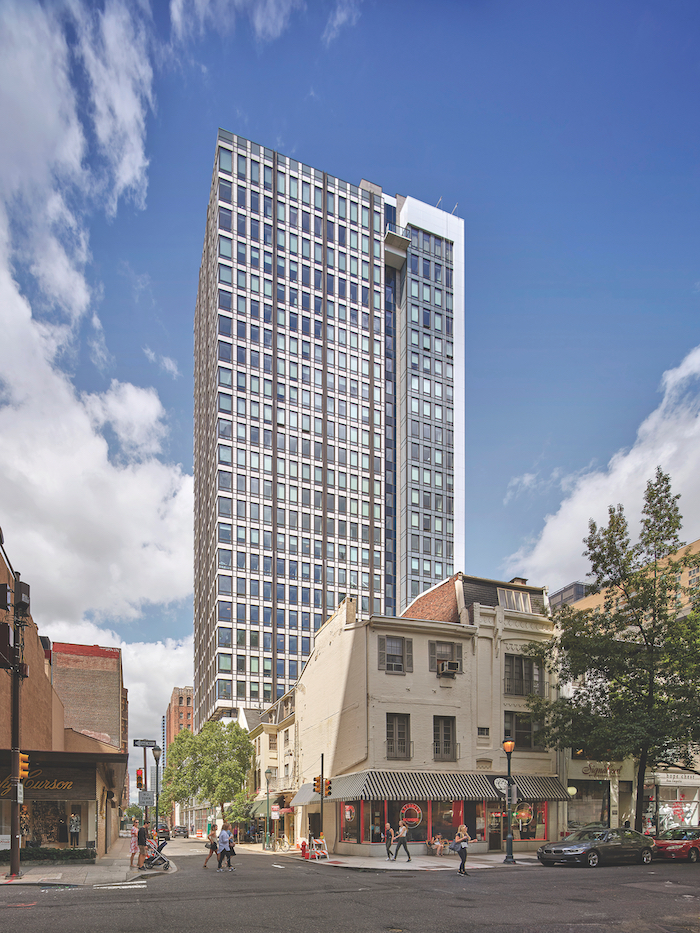
Developer Pearl Properties reduced the number of units in its luxury high-rise, The Harper, from 200 to 167 to add more 1,600 to 1,800-sf residences for families. The 280,000-sf, 24-story rental community, the work of DAS Architects, Harman Group (SE), and Wellcraft Construction Company (GC), is a block away from Philadelphia’s historic Rittenhouse Square. Amenities include co-working lounges, an indoor basketball court, a heated soaking pool, a 12,200-sf rooftop park, and a 24th-floor club room and sky deck. PHOTO: BARRY HALKIN
5. PUEBLO HOUSE MOVED TO MAKE WAY FOR FAMILY HOUSING

To make room on a tight three-quarter-acre site in East Hollywood for the Coronel Apartments, KFA Architects and Westport Construction moved a protected 1920s Pueblo house across the street and renovated it into two apartments and a community room. Nonprofit developer Hollywood Community Housing Corp. replaced 22 units of substandard REAP housing with 18 three-bedroom, 24 two-bedroom, and 12 one-bedroom apartments at rents of $488 to $1,354/month. The four-story LEED Platinum–targeted project is on the Metro Red Line and has a walk score of 87. PHOTO: KFA ARCHITECTURE
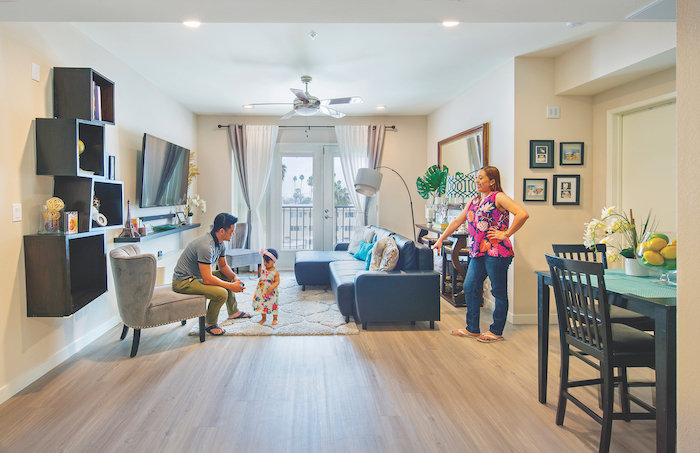
6. MS PATIENTS GET A NEW HOME IN BOSTON
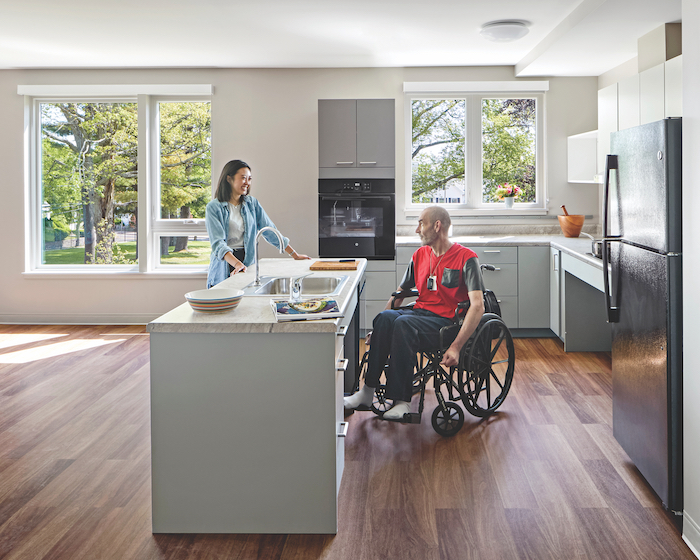
Adults with advanced multiple sclerosis are the primary occupants of Boston’s Harmon Apartments, designed by local architecture firm DiMella Shaffer. The 26 accessible one-bedroom and 10 two-bedroom units were developed by The Boston Home, which has served MS patients since 1881, and Affirmative Investments. Eight units were set aside for those with income levels at or below 30% of AMI; 24 for those at or below 60% of AMI; six are market rate. On-site services include wellness and fitness programs, caregiver training, wheelchair seating and positioning, and outpatient rehabilitation. PHOTO: ROBERT BENSON PHOTOGRAPHY
7. HIGH-RISE TOWER LOOKS OUT ON CHICAGO’S MUSEUM CAMPUS
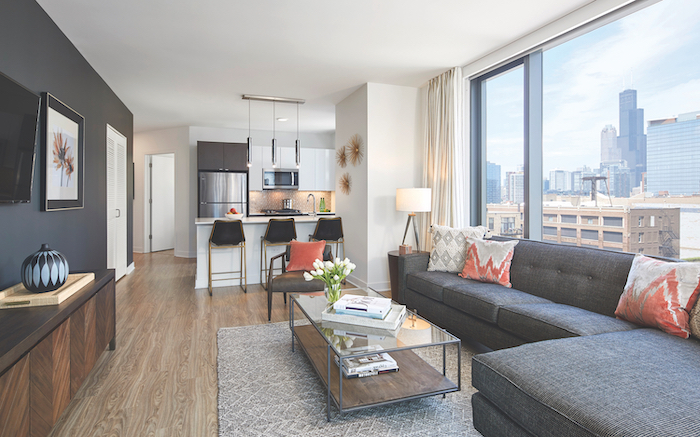
Walsh Construction completed The Paragon, a 47-story rental tower in Chicago’s South Loop for Murphy Development Group and CIM Group. The 500 units have views of the city’s Museum Campus and Grant Park. SCB was the architect. Mary Cook Associates designed the models for the studio, convertible, and one- and two-bedroom apartments. PHOTO: Mary Cook Associates
8. ADJMI’S DUMBO LUXURY CONDOS COME WITH A PRIVATE PARK

Architect Morris Adjmi’s twin 21-story towers, Front & York, bring “full-service, resort-style” living to Brooklyn’s DUMBO (“down under the Manhattan Bridge overpass”) neighborhood. The one- to four-bedroom condominiums are fitted with Adjmi-styled Italian cabinetry, Caldia stone countertops, Waterworks fittings, and Gaggenau appliances. Private chef’s kitchens, teen lounges, children’s playrooms, and a 77,000-sf Life Time fitness center, plus a private park designed by Michael Van Valkenburg Associates, add to the package. New Line Structures was the CM for co-owner/developers CIM Group and LIVWRK. Prices start at $950,000. RENDERING: WILLIAMS NEW YORK
Related Stories
Affordable Housing | Jul 27, 2023
Houston to soon have 50 new residential units for youth leaving foster care
Houston will soon have 50 new residential units for youth leaving the foster care system and entering adulthood. The Houston Alumni and Youth (HAY) Center has broken ground on its 59,000-sf campus, with completion expected by July 2024. The HAY Center is a nonprofit program of Harris County Resources for Children and Adults and for foster youth ages 14-25 transitioning to adulthood in the Houston community.
Adaptive Reuse | Jul 27, 2023
Number of U.S. adaptive reuse projects jumps to 122,000 from 77,000
The number of adaptive reuse projects in the pipeline grew to a record 122,000 in 2023 from 77,000 registered last year, according to RentCafe’s annual Adaptive Reuse Report. Of the 122,000 apartments currently undergoing conversion, 45,000 are the result of office repurposing, representing 37% of the total, followed by hotels (23% of future projects).
Multifamily Housing | Jul 25, 2023
San Francisco seeks proposals for adaptive reuse of underutilized downtown office buildings
The City of San Francisco released a Request For Interest to identify office building conversions that city officials could help expedite with zoning changes, regulatory measures, and financial incentives.
Sponsored | Multifamily Housing | Jul 20, 2023
Fire-Rated Systems in Light-Frame Wood Construction
Find guidance on designing and building some of the most cost-effective, code-compliant fire-rated construction systems.
Multifamily Housing | Jul 13, 2023
Walkable neighborhoods encourage stronger sense of community
Adults who live in walkable neighborhoods are more likely to interact with their neighbors and have a stronger sense of community than people who live in car-dependent communities, according to a report by the Herbert Wertheim School of Public Health and Human Longevity Science at University of California San Diego.
Affordable Housing | Jul 12, 2023
Navigating homelessness with modular building solutions
San Francisco-based architect Chuck Bloszies, FAIA, SE, LEED AP, discusses his firm's designs for Navigation Centers, temporary housing for the homeless in northern California.
Sponsored | Fire and Life Safety | Jul 12, 2023
Fire safety considerations for cantilevered buildings [AIA course]
Bold cantilevered designs are prevalent today, as developers and architects strive to maximize space, views, and natural light in buildings. Cantilevered structures, however, present a host of challenges for building teams, according to José R. Rivera, PE, Associate Principal and Director of Plumbing and Fire Protection with Lilker.
Mass Timber | Jul 11, 2023
5 solutions to acoustic issues in mass timber buildings
For all its advantages, mass timber also has a less-heralded quality: its acoustic challenges. Exposed wood ceilings and floors have led to issues with excessive noise. Mass timber experts offer practical solutions to the top five acoustic issues in mass timber buildings.
Multifamily Housing | Jul 11, 2023
Converting downtown office into multifamily residential: Let’s stop and think about this
Is the office-to-residential conversion really what’s best for our downtowns from a cultural, urban, economic perspective? Or is this silver bullet really a poison pill?


